Article Topics: National Parks in Virginia, National Park Service Sites in Virginia, Virginia National Parks
The place where the British first founded a colony in North America, the chosen location of America’s capital, and the crossroads of the North and the South, Virginia has arguably played a bigger role in United States history than any other state. This rich heritage is reflected in the numerous national parks in Virginia.
Dotted by Civil War battlefields, historic sites and monuments, and home to one of the East’s greatest national parks—Shenandoah—Virginia is a great place to explore for history buffs and nature lovers alike.
Contents
- Virginia National Parks
- Top 12 Best National Parks in Virginia
- 12. Arlington House, the Robert E. Lee Memorial
- 11. George Washington Birthplace National Monument
- 10. Fredericksburg & Spotsylvania National Military Park
- 9. Cumberland Gap National Historical Park
- 8. Fort Monroe National Monument
- 7. Great Falls Park
- 6. Manassas National Battlefield Park
- 5. Appomattox Court House National Historical Park
- 4. Assateague Island National Seashore
- 3. Blue Ridge Parkway
- 2. Colonial National Historical Park (Jamestown, Yorktown and Colonial Parkway)
- 1. Shenandoah National Park
- Virginia National Parks Map
- Best Places to Start Your Virginia National Parks Road Trip
- Other National Park Service Sites in Virginia
- National Trails in Virginia
- National Parks in Other States
Virginia National Parks
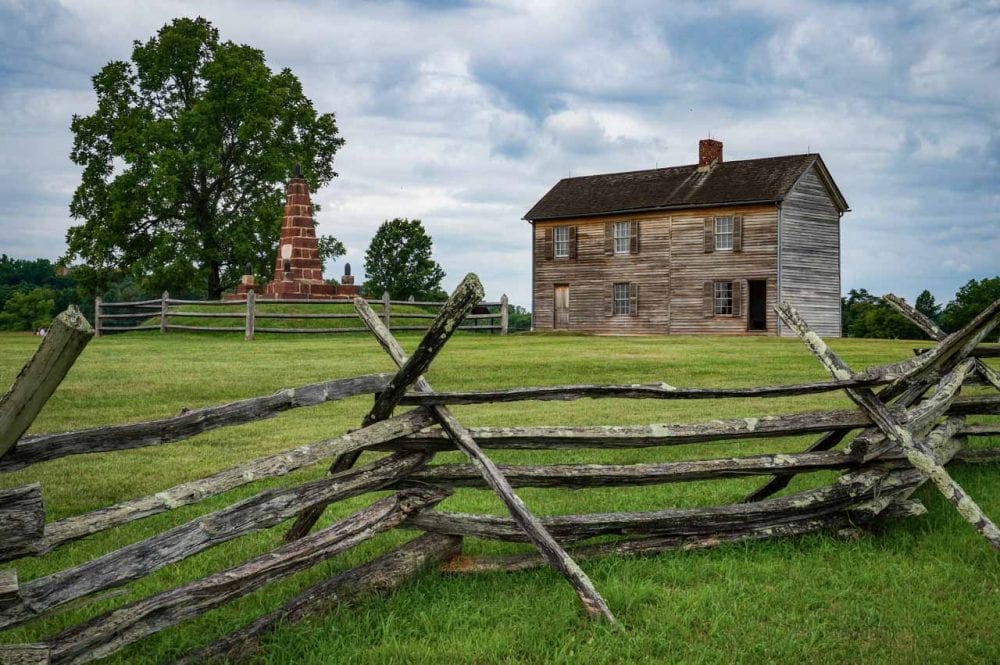
For the purpose of this post, I used the widest definition of “national park”, meaning all units managed by the National Park Service (NPS). So, you’ll find everything from national battlefields, memorials, historical parks and parkways in Virginia.
This post about the best Virginia national parks contains affiliate links. You can read more about our Terms of Use / Disclosure here.
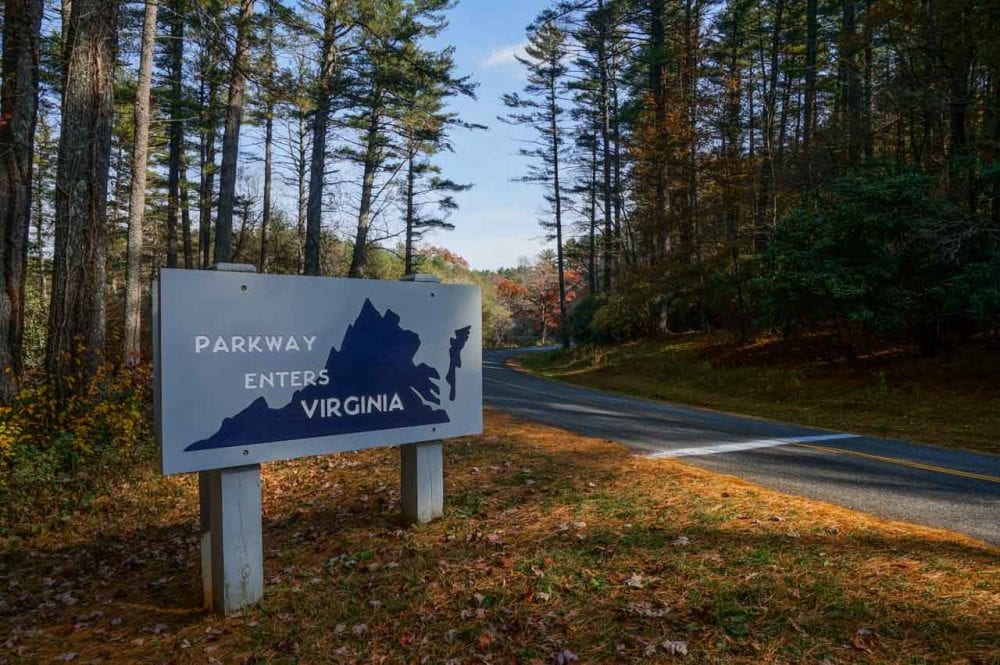
Top 12 Best National Parks in Virginia
Captain John Smith and the Virginia Company of London established the Jamestown colony in 1607, effectively the first permanent British settlement on the New World mainland.
That site is now preserved by the National Park Service (see number 2 below). The most famous story from that time is undoubtedly that of Pocahontas, a Powhatan chief’s daughter.
This is just to illustrate how far back the history of the colony and state of Virginia goes. For over 400 years, Virginia has seen numerous battles, political courage and cowardice, and technological innovations. It’s also the state that has raised the most U.S. Presidents—eight in total, including four of the first five presidents (Washington, Jefferson, Madison and Monroe).
While it may seem that the Virginia national parks are dominated by historic sites and monuments, let’s not forget that there are some absolutely beautiful landscapes, too.
The Blue Ridge Mountains cross the state in a northeasterly direction. These ancient, rolling mountains are home to both the iconic Blue Ridge Parkway and Shenandoah National Park, which is the only “true” national park in Virginia.
As shown in both the amazing diversity and historical significance of the many national parks in Virginia in the rest of this blog post, the “Old Dominion” is definitely one of the most fascinating states in America.
12. Arlington House, the Robert E. Lee Memorial
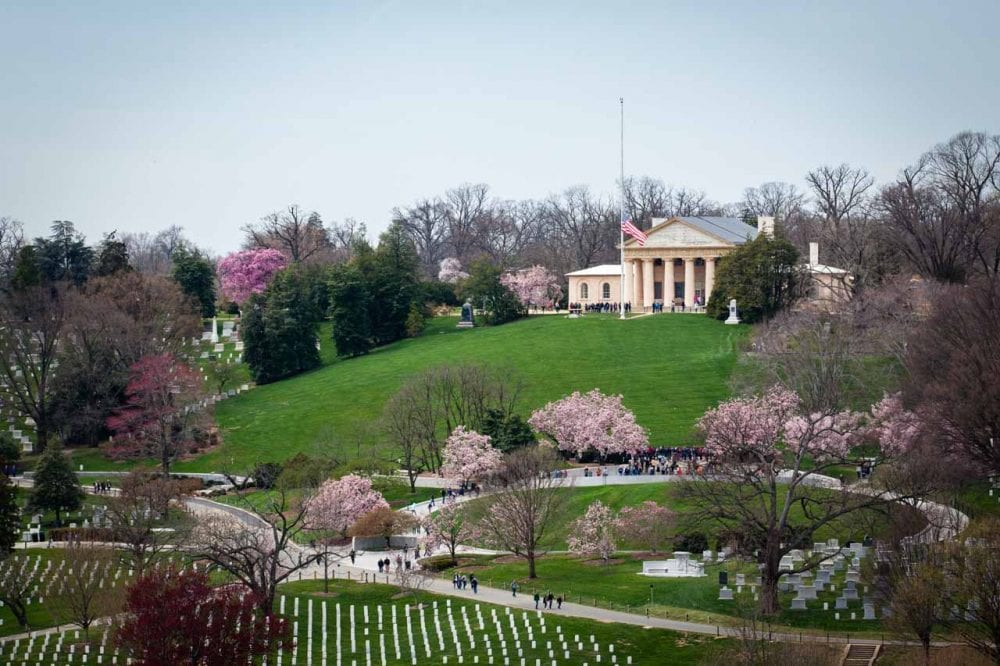
Arlington House is America’s memorial to Robert E. Lee. Although most known for the being the leader of the Confederate Army during the American Civil War, General Lee also played a significant role promoting peace and reunion after the war.
Once the home of Robert E. Lee, this beautiful mansion overlooks the Potomac River and the National Mall in Washington, D.C. across the river.
You can tour the house at your own pace or with a guide. Also make sure to visit the Enslaved Quarters, which tell another important part of the story of Arlington House.
Famous Arlington National Cemetery surrounds the house, occupying more than half of the former Arlington Plantation. Now, it’s the final resting place of iconic Americans such as John F. Kennedy and Jacky Kennedy, John Glenn and George C. Marshall.
11. George Washington Birthplace National Monument
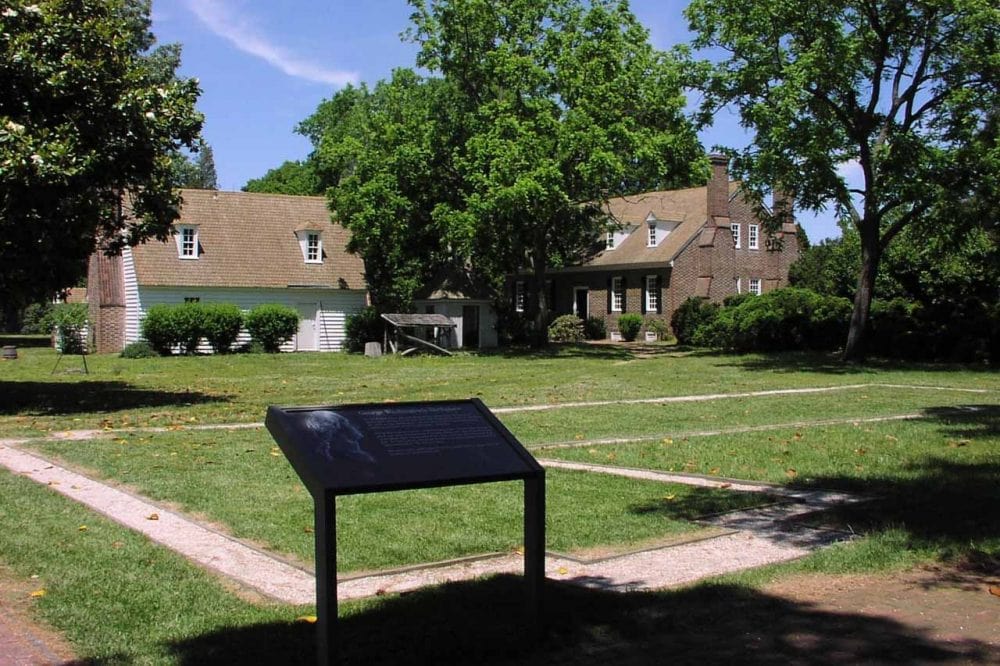
A tribute to what could easily be considered the greatest American ever, the George Washington Birthplace National Monument is the place where America’s first president spent the first three years of his life, as well as some of his teenage years.
Even though George Washington only lived here for a short time, it is where he gained the knowledge, ideas and principles that would influence him later on in life. This is where the foundations of his future greatness were laid.
Established in honor of Washington’s 200th birthday, the George Washington Birthplace National Monument is a great place to explore American history.
The grounds include a visitor center, a colonial farm and a colonial kitchen. Other attractions range from the Memorial House Museum and Washington Family Burial Ground to a nature trail and Potomac River beach.
10. Fredericksburg & Spotsylvania National Military Park
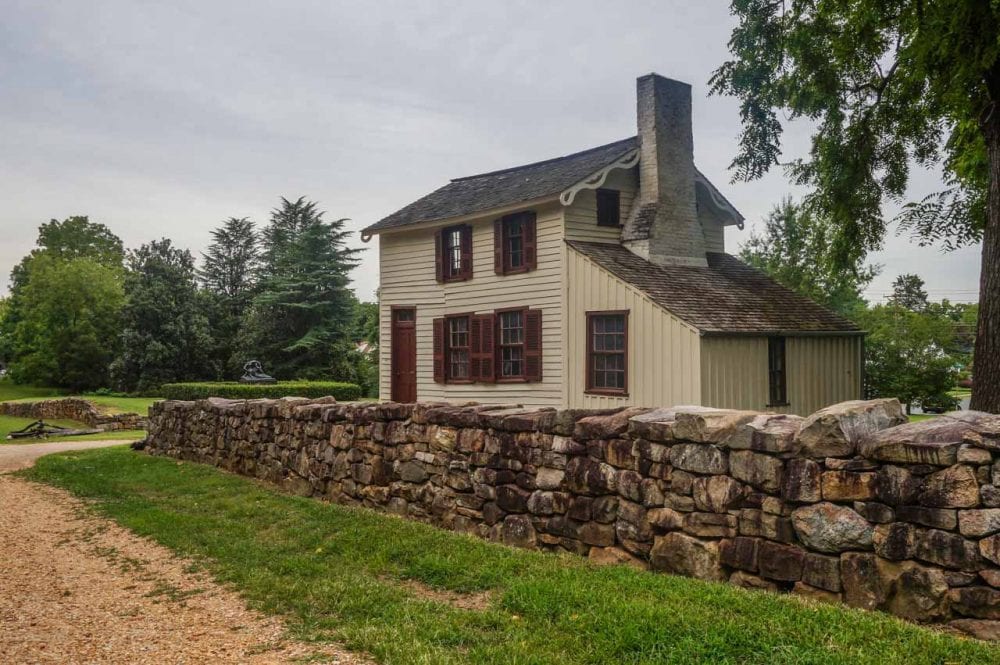
The combined battlefields of Fredericksburg, Wilderness, Chancellorsville and Spotsylvania are sometimes referred to as “America’s battleground.” This is where the Civil War roared to its blood-soaked climax.
Comprised of various sites peppered across central Virginia, this national military park is best explored by car. Each individual park has a guided auto route, walking paths and information boards.
Together, they represent the massive cost, tragedy and misery that war brings. They showcase the devastation the Civil War delivered to rural communities, from ruined farms to looted towns.
9. Cumberland Gap National Historical Park
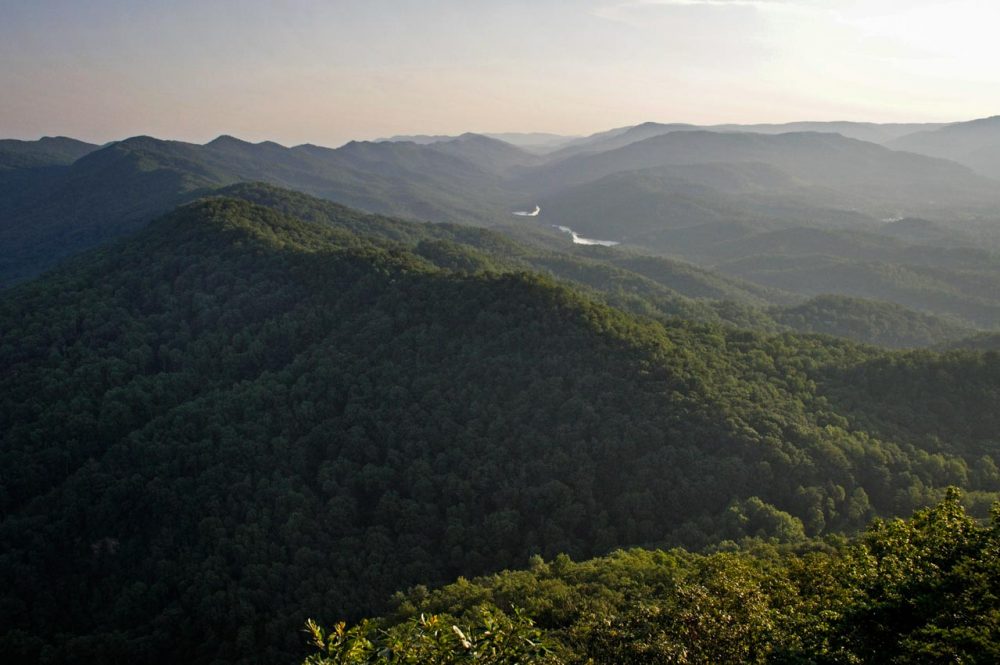
Situated on the borders of Virginia, Kentucky and Tennessee, Cumberland Gap National Historical Park is a historic pass in a ridge in the Cumberland Mountains. It was used by Native Americans for thousands of years as a passageway in the lower Appalachian Mountains.
Later on, Daniel Boone led a party of frontiersmen across the pass, effectively opening it up to pioneers moving west into Kentucky and Tennessee.
It was the very first gateway to the West, a path followed by buffalo, Native Americans, pioneers and settlers alike.
Nowadays, the park offers lots of outdoor activities, from hiking and camping to wildlife watching. There are also a number of historic sites, including the ruins of an old iron furnace, handmade cabins and Civil War fortifications.
8. Fort Monroe National Monument
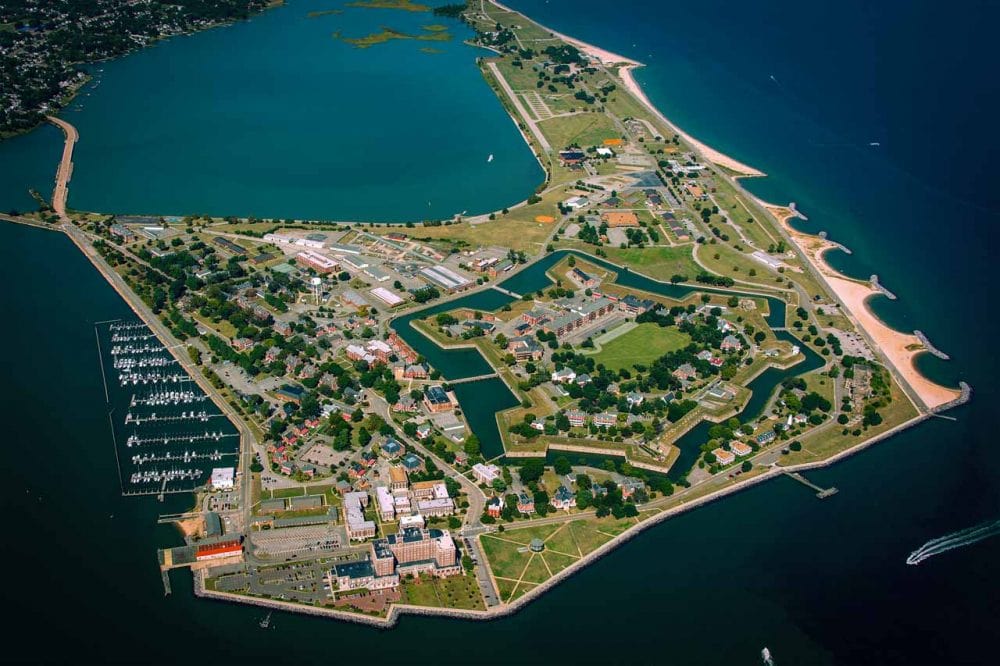
Set at the tip of the Virginia Peninsula, Fort Monroe National Monument used to guard the channel between Chesapeake Bay and Hampton Roads.
Until it was disarmed in 1946, the fort protected some of America’s most important areas. This includes the entire Potomac River mouth and Chesapeake Bay, the cities of Baltimore and Washington, D.C., but also a number of strategic naval bases and shipyards.
A moat surrounds this imposing six-sided bastion fort, which, by area, is the largest fortress ever constructed in the United States.
Throughout its long history—its origins go back to 1609, merely two years after the founding of the Jamestown colony—Fort Monroe has played a role in many significant events.
From the early settlement days of John Smith and the arrival of the first enslaved Africans to offering a safe haven for freed slaves during the Civil War and 21st-century military protection, it’s one of America’s most important historic forts.
7. Great Falls Park
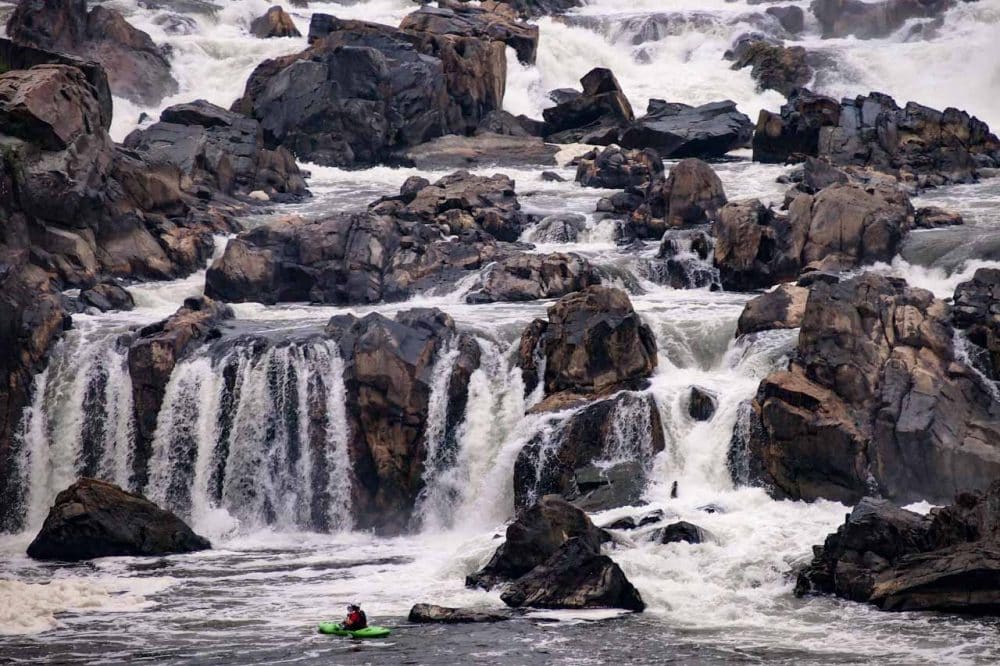
Only 15 miles from Washington, D.C., Virginia’s Great Falls are the most spectacular section of the Potomac River. This is where the river builds up power and speed, and rumbles down a series of massive waterfalls in Mather Gorge.
The park is one of the greatest natural attractions in northern Virginia. The falls themselves are the star of the show, but there are also a few nice walking trails to explore, as well as historic sites. The Patowmack Canal, for example, offers an insight into America’s earliest days.
6. Manassas National Battlefield Park
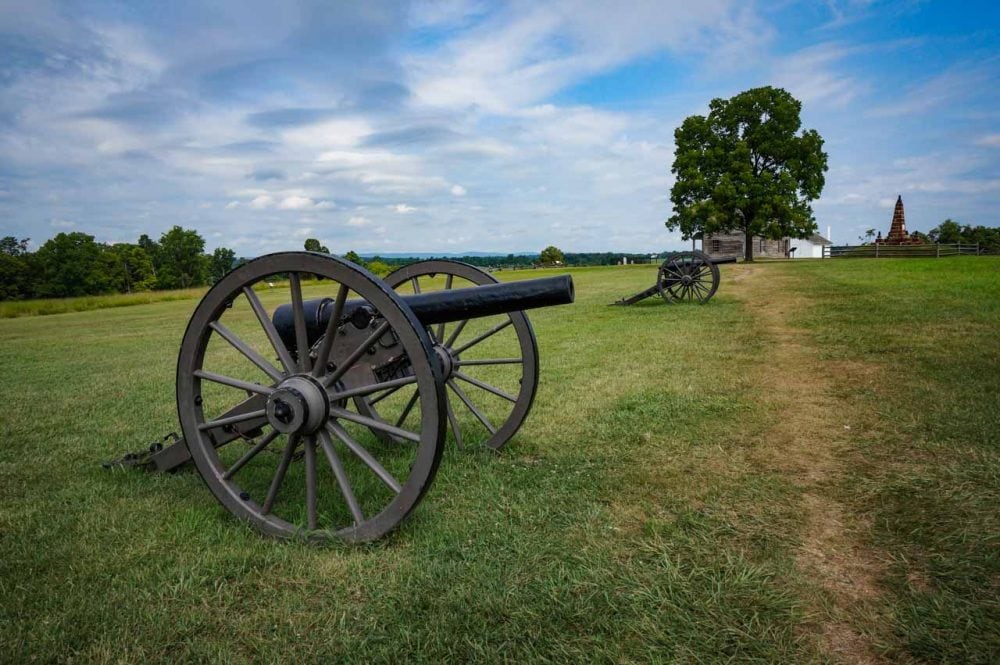
Located in northern Virginia, Manassas National Battlefield Park preserves the area where the Union and Confederate Armies clashed for the first time in the Civil War.
That first clash is known as the First Battle of Manassas—or the First Battle of Bull Run. It took place on July 21, 1861.
While up until then, everyone assumed the war would be a quick and swift one, the fierce resistance of the Confederate Army buried that naïve notion forever. Additionally and illustratively, this was where Confederate General Thomas J. Jackson got his nickname “Stonewall.”
It was the first battle in what would become by far the bloodiest war in American history.
The two armies met at Manassas once again in August 1862, known as the Second Battle of Manassas (or Bull Run). Won by the Confederates, it brought the Southern Army to the peak of its power.
At this fascinating national battlefield park, you can retrace the movements of both armies, see and visit historic buildings, and learn about how local communities experienced the battles.
5. Appomattox Court House National Historical Park
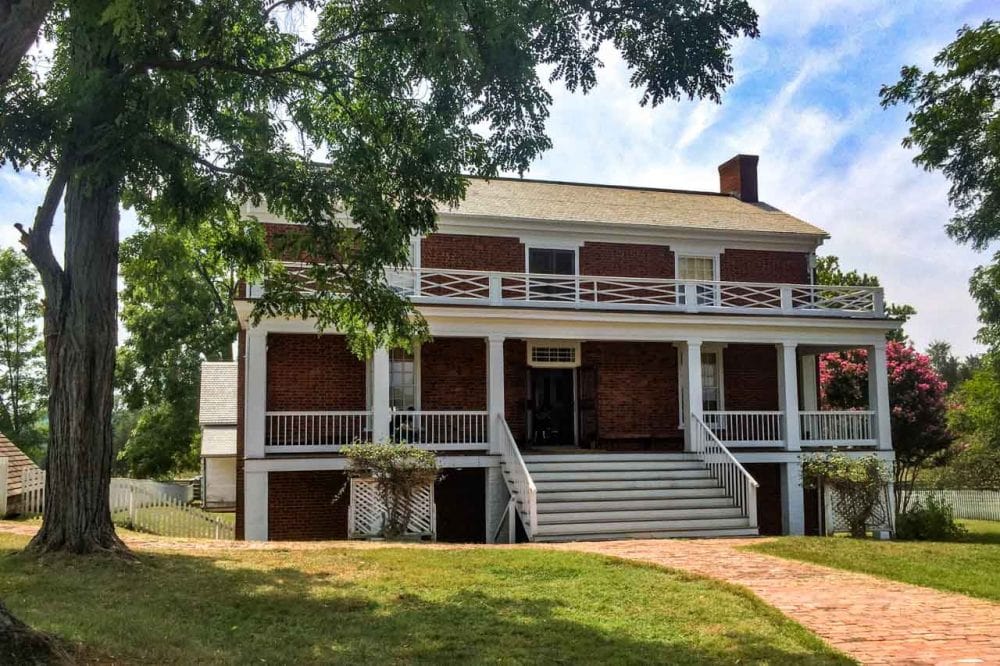
While Manassas provided the Union Army with a reality check and the Confederate Army with a confidence boost, those roles were reversed entirely almost four years later at the village of Appomattox Court House.
This is where, on April 8, 1865, Confederate General Robert E. Lee and his Army of Northern Virginia surrendered to the Union Army of the Potomac under General Ulysses S. Grant.
That morning’s battle, now known as the Battle of Appomattox Court House, was one of the last battles in the bloody Civil War.
One of the best Virginia national parks for Civil War buffs, Appomattox Court House National Historical Park is superbly well-preserved. It contains several historic buildings, including McLean House where Lee signed his surrender.
For some more context about the events and sites related to the Battle of Appomattox Court House, I strongly recommend driving the Appomattox Court House Driving Tour.
4. Assateague Island National Seashore
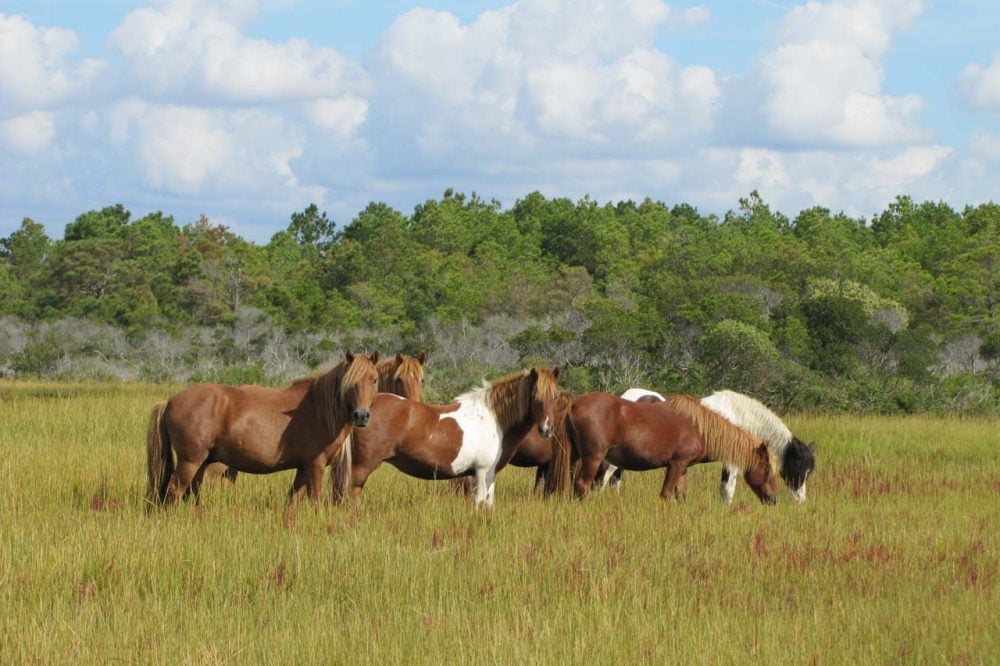
Shared by Maryland and Virginia, Assateague Island is a barrier island that juts out into the Atlantic Ocean. The majority of this national seashore is in Maryland, while Virginia’s part includes the Chincoteague National Wildlife Refuge and interpretive facilities and beaches managed by the NPS.
The island features numerous bays, coves, beaches, maritime forests and salt marshes, and is a great place for wildlife viewing. It’s especially famous for its feral horses, which can be seen roaming the beaches and grasslands.
As far as recreational opportunities go, they include everything you might expect from a coastal park.
At Assateague Island, you can go hiking, biking, horseback riding, kayaking, camping and sunbathing. It may just be the most beautiful area on the entire Virginia coast!
3. Blue Ridge Parkway
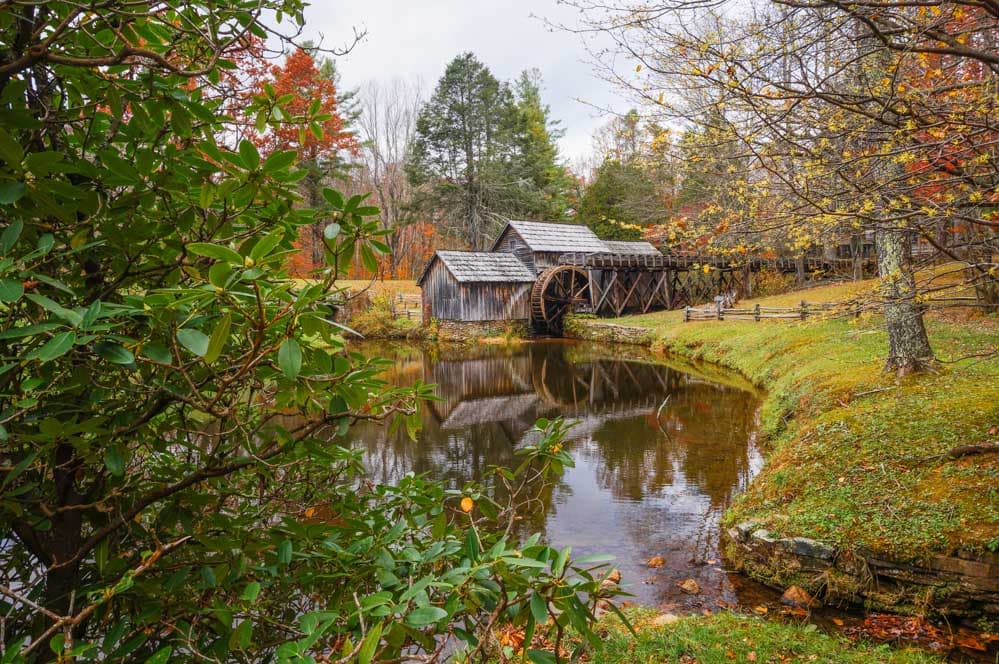
The Blue Ridge Parkway winds its way along the crest of the southern Appalachian Mountains, connecting Shenandoah National Park in Virginia and Great Smoky Mountains National Park in North Carolina and Tennessee.
One of the most-visited National Park Service units, this glorious mountain road offers amazing views, hiking opportunities and cultural exploration.
The parkway allows motorists to explore and discover the beautiful Blue Ridge Mountains uninterruptedly. In its entire length of 469 miles, there’s not a single traffic light or any advertising.
2. Colonial National Historical Park (Jamestown, Yorktown and Colonial Parkway)
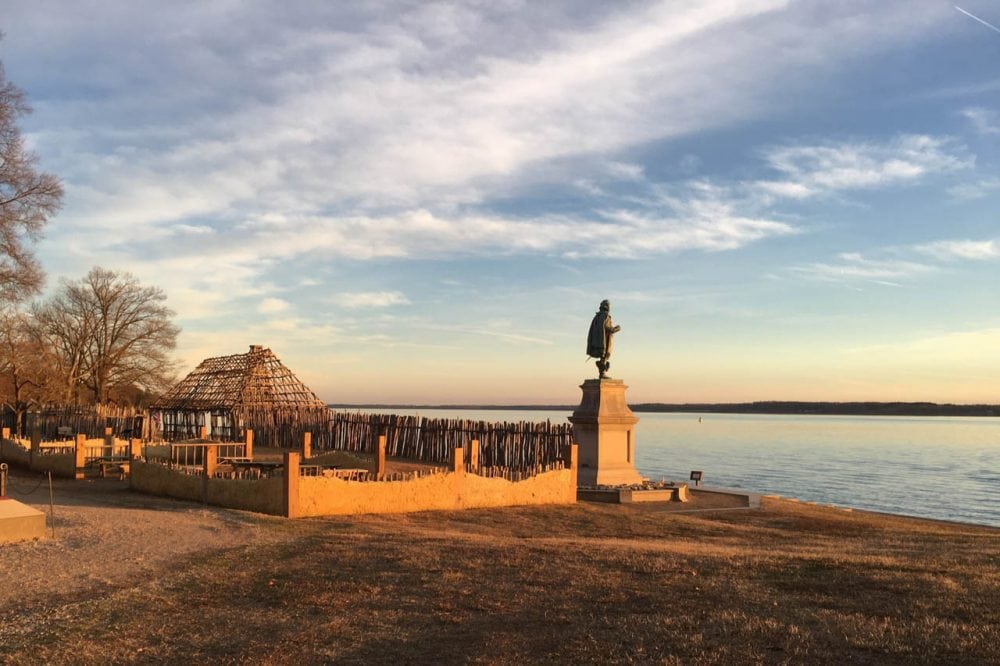
Encompassing three separate National Park Service units—Historic Jamestowne, Yorktown Battlefield and the Colonial Parkway—Colonial National Historical Park is perhaps one of America’s most important national park sites.
This is, after all, where John Smith founded the Jamestown colony and where General George Washington defeated the British in the last major battle of the Revolutionary War. Without those two events, there probably wouldn’t be any United States of America right now.
The scenic Colonial Parkway connects Jamestown and Yorktown, making it a fantastic three-part national park in Virginia, on the way also passing by Colonial Williamsburg (which is not managed by the NPS).
The park offers an amazing insight into the European colonization of North America. Importantly, Jamestown was the place where, in 1619, the first documented African slave sale took place, thus initiating centuries of race-based slavery in America.
From the different cultures—European, Native American and African—that mingled to create an entirely new type of society to the American Revolutionary War, which gave birth to a brand new nation, the significance of the area cannot be overstated.
1. Shenandoah National Park
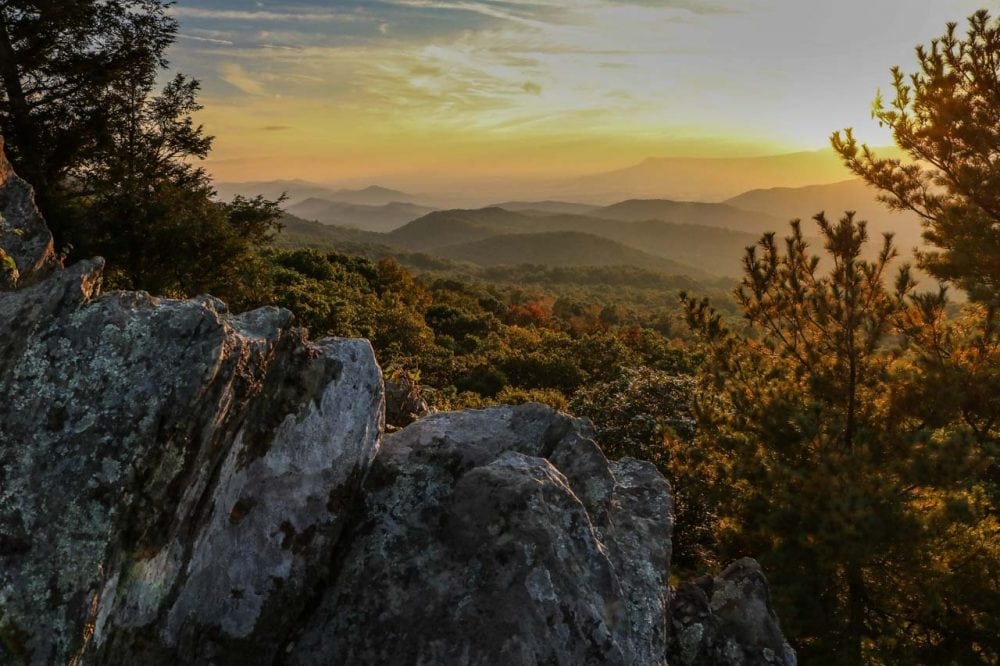
Located in the heart of Virginia, high in the Blue Ridge Mountains, Shenandoah National Park protects a historic mountain landscape characterized by endless mountain ranges, dense forests, large tracts of wilderness, beautiful waterfalls and lots of wildlife.
Of all national parks in Virginia in this list, this is the only “real” national park. Because of its location in central Virginia near Washington, D.C., Shenandoah receives lots of visitors, many of whom are day trippers.
Shenandoah National Park is super-easy to explore, too. There’s only one road through the park: 105-mile Skyline Drive, which snakes along the ridge of the Blue Ridge Mountains. On the way, there are dozens of hiking trails, historic sites and more than 70 scenic overlooks!
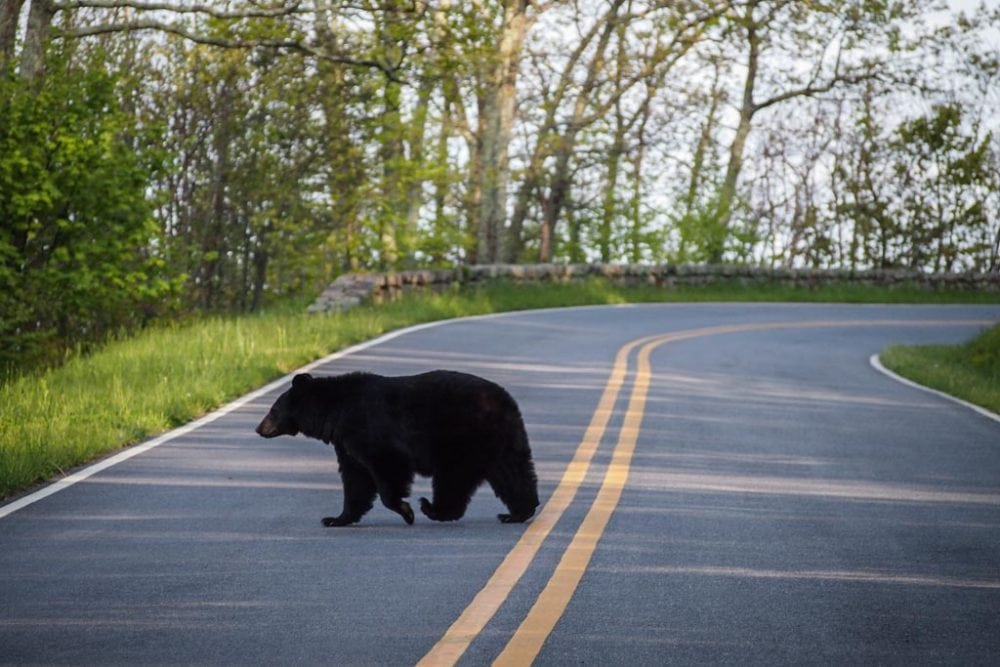
I recommend spending more than just one day in this wonderful park. Two days are an absolute minimum.
This gives you the opportunity to enjoy both and sunrise and sunset in Shenandoah, while also increasing your chances to see typical Shenandoah wildlife, such as white-tailed deer and, especially, black bears.
You can choose from a variety of campgrounds, as well as other Shenandoah National Park accommodations, from two historic lodges to rustic cabins.
Virginia National Parks Map
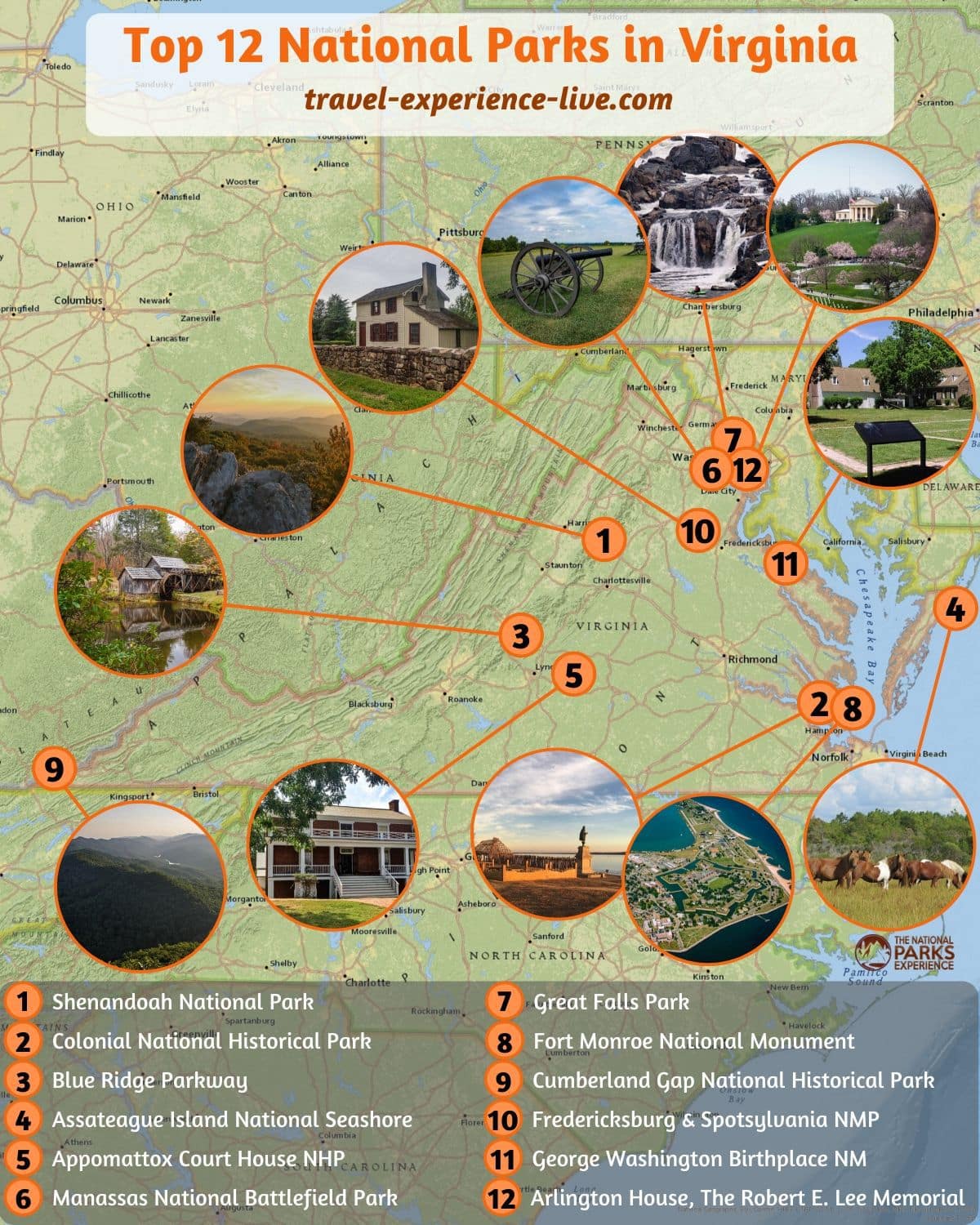
Best Places to Start Your Virginia National Parks Road Trip
There are a few towns and cities in and even near Virginia that could serve as a great starting point for a road trip to the national parks in Virginia.
My personal recommendations would be the following (also because they have an airport):
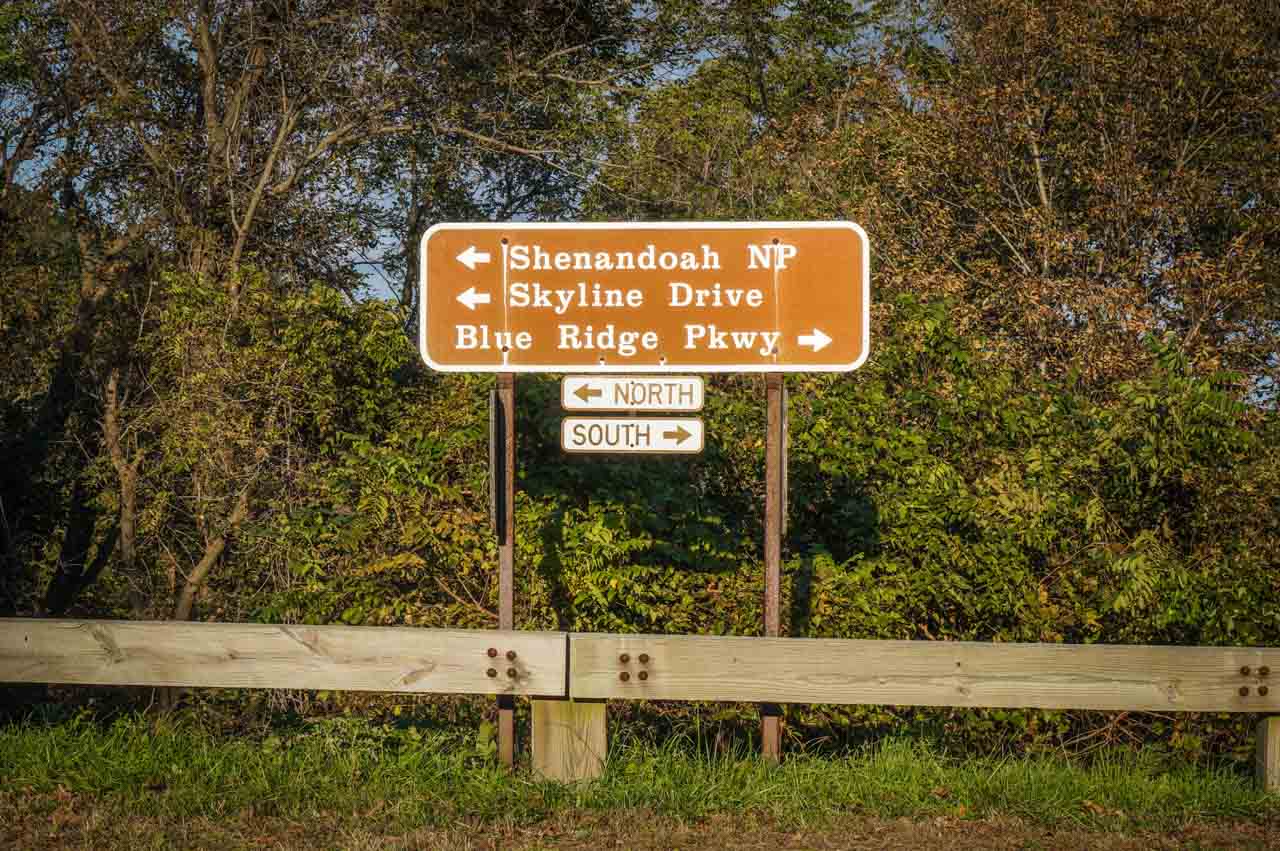
Other National Park Service Sites in Virginia
In addition to the twelve Virginia national parks above, there are several others. From historic homes to battlefields, nature parks and parkways, they offer more opportunities to immerse yourself in Virginia’s history and natural beauty.
- Booker T Washington National Monument
- Cedar Creek & Belle Grove National Historical Park
- George Washington Memorial Parkway
- Maggie L Walker National Historic Site
- Petersburg National Battlefield
- Prince William Forest Park
- Richmond National Battlefield Park
- Wolf Trap National Park for the Performing Arts
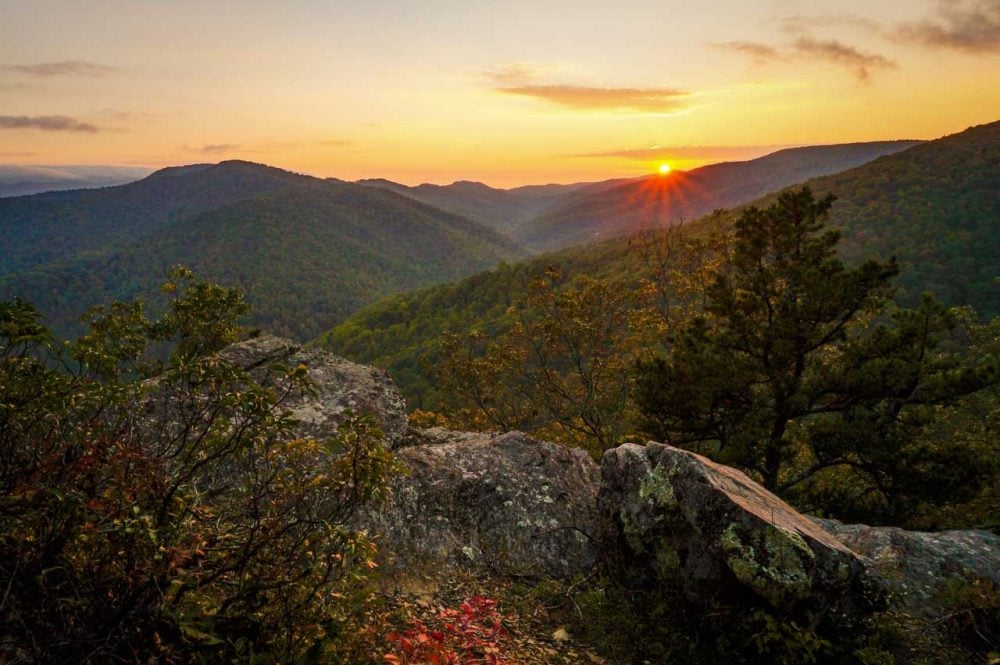
National Trails in Virginia
Because many events in the history of Virginia didn’t occur at just one single location, but were more like a series of events, there’s also no lack of designated historic trails in Virginia. Great examples are the Overmountain Victory Trail and the Washington-Rochambeau Revolutionary Route.
For nature and landscapes, nothing beats the renowned Appalachian Trail. In fact, no fewer than 550 miles of the A.T. run through Virginia, the longest section of the trail in any state. That’s a quarter of its entire length!
- Appalachian National Scenic Trail
- Captain John Smith Chesapeake National Historic Trail
- Overmountain Victory National Historic Trail
- Potomac Heritage National Scenic Trail
- Star-Spangled Banner National Historic Trail
- Washington-Rochambeau Revolutionary Route National Historic Trail
Disclaimer: The following images used in this Virginia national parks article are courtesy of the National Park Service (in the public domain): Arlington House, George Washington Birthplace, Cumberland Gap, Fort Monroe, Appomattox Court House, Assateague Island, and Colonial National Historical Park. All other images in this article are my own.
National Parks in Other States
- Arizona National Parks
- Colorado National Parks
- North Dakota National Parks
- South Dakota National Parks
- Utah National Parks
- Washington National Parks
- Wyoming National Parks
